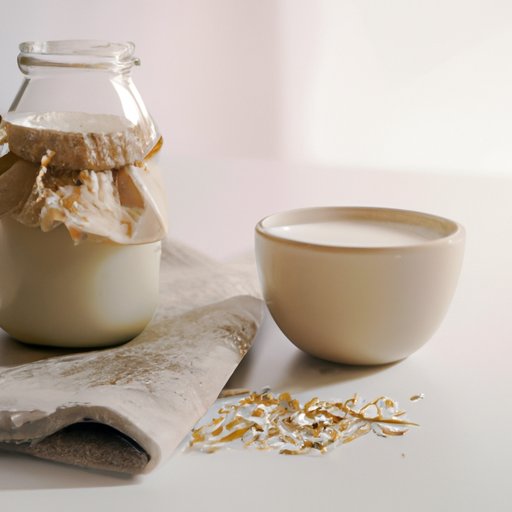
I. Introduction
Do you struggle with making oat milk at home? Are you tired of spending a fortune on store-bought oat milk that may contain unwanted additives and preservatives? Look no further, as this article will provide an easy, step-by-step guide to making oat milk at home.
II. Benefits of Making Oat Milk at Home
There are numerous health benefits to making oat milk at home. Homemade oat milk is free from preservatives and additives, making it a healthier alternative to store-bought oat milk. Additionally, homemade oat milk is cost-effective compared to store-bought alternatives.
III. Step-by-Step Guide to Making Oat Milk
To make oat milk, you will need the following ingredients:
- 1 cup of oats
- 4 cups of water
- Pinch of salt (optional)
- 1-2 tablespoons of honey or maple syrup (optional)
To make oat milk:
- Soak the oats in water for at least 30 minutes or overnight.
- Drain the oats and rinse them thoroughly.
- Blend the oats and water until smooth.
- Strain the mixture through a nut milk bag or cheesecloth into a jar or pitcher.
- Add salt and sweetener if desired.
Tips and tricks for success:
- Soaking the oats overnight will result in a creamier texture.
- Be sure to rinse the oats thoroughly to avoid any chalky aftertaste.
- Blend the mixture for at least 30 seconds to achieve a smooth texture.
IV. Different Variations of Oat Milk
If you’re looking to add some variety to your oat milk, try adding vanilla extract or chocolate powder for a flavored option.
For vanilla oat milk, add 1-2 teaspoons of vanilla extract and sweetener to the mixture before blending. For chocolate oat milk, add 1-2 tablespoons of cocoa powder and sweetener to the mixture before blending.
Accompanying recipes for each variation:
- Vanilla Oat Milk Latte
- Chocolate Oat Milk Smoothie
V. Comparison of Homemade vs. Store-Bought Oat Milk
When comparing the cost and nutritional value of homemade and store-bought oat milk, homemade oat milk is the clear winner. Store-bought oat milk can contain added sugars and preservatives, as well as a higher price tag. Homemade oat milk is cost-effective and free from unwanted additives.
VI. Leftover Oat Pulp
Once you’ve strained the oat milk, you’ll have leftover oat pulp. Don’t let it go to waste! Oat pulp can be used in a variety of cooking and baking recipes.
Recipes that utilize leftover oat pulp:
- Oatmeal Raisin Cookies
- Oat Pulp Veggie Burgers
VII. Conclusion
Making oat milk at home is an easy, cost-effective way to enjoy a healthy and delicious alternative to store-bought options. By following this step-by-step guide and experimenting with different flavor variations and recipes utilizing leftover oat pulp, you can enjoy the benefits of homemade oat milk.





